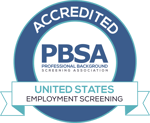
E-Verify is an online application maintained by USCIS and used to submit information from a completed Form I-9 via E-Verify to the Social Security Administration (SSA) and Department of Homeland Security (DHS) for electronic verification of employment eligibility. This program was originally introduced in 1996. In 2007 it would require all federal government agencies to utilize E-Verify. Currently it is required in 22 states for public and private employers and that number looks to grow each year.
Agencies governing E-Verify include the United States Citizenship and Immigration Services (USCIS), who operates E-Verify, and the U.S. Immigration and Customs Enforcement (ICE), who performs employer audits of Form I-9 and E-Verify.
In addition to federal laws for employment eligibility verifications various local and state laws require E-Verify. Specific industries are also required to E-Verify all employees, such as agriculture.
ICE openly admits their intention to increase audits every year and target specific industries and jurisdictions. Although no one is immune, if you have a FAR-Clause, belong to an industry required to use E-Verify or operate in a jurisdiction with E-Verify mandates, be aware you are especially vulnerable to an audit.
E-Verify Compliance
Every time an employee is hired, Form I-9 must be completed for that employee. Unless required by law, E-Verify is an optional electronic verification of employment eligibility with SSA and DHS.
Primary areas of compliance with E-Verify, specifically, include:
- E-Verify is either voluntarily used as an optional supplement to Form I-9, or required by law.
- E-Verify is not a replacement for, nor is it the same as, Form I-9.
- E-Verify cannot be used for the purposes of “background screening” or “checking a SSN or identity” on an applicant. Misuse of E-Verify for reasons such as this can carry hefty fines in addition to other penalties.
- Employers who use E-Verify, must do so in a consistent manner for all employees. Failure to do so can result in penalty and risks discrimination allegations.
- E-Verify employers must conspicuously display two participation notices – E-Verify Participation and Right to Work – in both English and Spanish. Nineteen additional languages are available.
- E-Verify can only be run on new employees after an offer of employment has been made and accepted. Additionally, E-Verify must be initiated before the end of the third business day after the employee has started work for pay – similar to Form I-9 rules
- E-Verify can only be run once on a new employee and follows similar rules to Form I-9 for rehires, unless permitted by law. This is true even in the case of expiring work authorization documents.
- A Tentative Non-Confirmation (TNC) may not be used to take adverse action against an employee.
- Only in the case of a Final Non-Confirmation or a DHS No-Show result, may an employer take adverse action against an employee based on the E-Verify results.
Choice Screening’s Solution: Form I-9 Comply™
Choice Screening’s Form I-9 ComplyTM helps employers mitigate risk of Form I-9 and E-Verify non-compliance. Form I-9 is in fact a simple form, but can be tricky to be compliant with and cost companies tens and hundreds of thousands of dollars. Form I-9 ComplyTM aims at helping you remain compliant, which in turn helps you avoid fines and fees. If you background screen applicants, you’re hiring employees. If you hire employees, you’re completing Form I-9. And if you complete Form I-9 without error checking algorithms, your forms likely contain error. Contact us to get started or for a free demo!
As part of any good hiring strategy, partner with a background screening provider you can trust, stay informed, and do not forget to consult legal counsel. Please note: this blog is not all-encompassing and not meant to provide legal advice.


